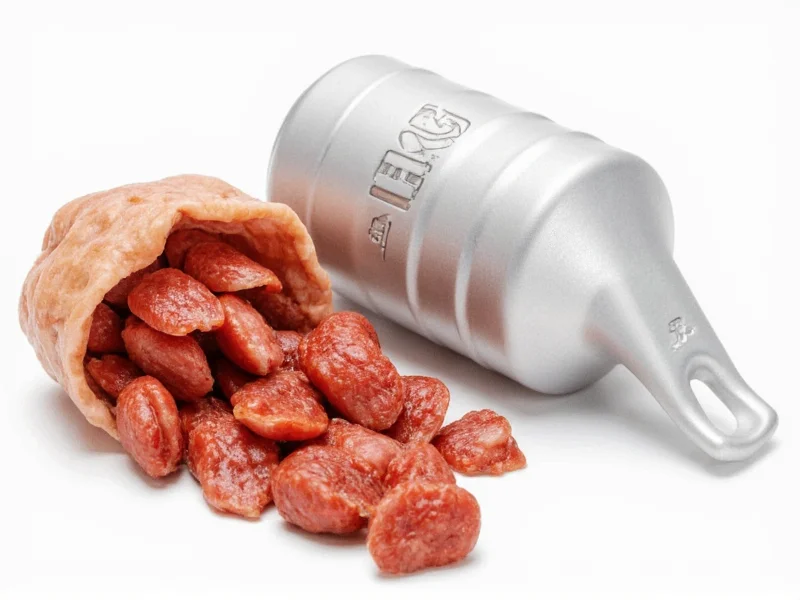When selecting sausage making equipment, understanding the specific capabilities of different models is essential for achieving professional results at home. LEM Products has established itself as a trusted manufacturer in the home meat processing industry, offering sausage stuffers that balance functionality with user-friendly design.
Understanding LEM Sausage Stuffer Types
LEM offers two primary sausage stuffer categories that cater to different user needs and production volumes. Each type serves specific purposes in the home sausage making process, with distinct advantages depending on your requirements.
| Type | Capacity Range | Best For | Key Features |
|---|---|---|---|
| Manual Piston Stuffers | 5-22 lbs | Small batches, beginners | Stainless steel construction, adjustable pressure, compact storage |
| Electric Stuffers | 15-40+ lbs | Larger batches, frequent use | Variable speed control, continuous operation, reduced physical effort |
Key Features That Define Quality Sausage Equipment
When evaluating the best LEM sausage stuffer for home use, several engineering elements determine performance and longevity. The stainless steel construction isn't merely aesthetic—it prevents corrosion from meat acids and simplifies cleaning between batches. Most models include multiple stuffing tubes (typically 3/8", 5/8", and 1") that accommodate different sausage casings and styles, from breakfast links to large salami.
Proper sealing mechanisms prevent meat backflow during operation, a common issue with lower-quality stuffers. The hopper design affects how efficiently you can load ground meat, with wider openings reducing preparation time. For those exploring how to use LEM sausage stuffer equipment effectively, the consistent pressure application is crucial for eliminating air pockets that can compromise sausage texture and shelf life.
Selecting the Right Model for Your Needs
Determining which LEM sausage stuffer suits your kitchen requires assessing several factors beyond basic functionality. Production volume should guide your capacity selection—occasional users making 5-10 pound batches will find manual models sufficient, while those processing whole animals benefit from electric models' continuous operation.
Storage space considerations matter significantly for home kitchens. Manual piston stuffers typically mount directly to countertops with clamps, while electric models require dedicated floor space. The learning curve differs between types; manual models teach proper pressure control but demand more physical effort, making them ideal for understanding sausage making fundamentals before advancing to electric equipment.
Optimizing Performance and Maintenance
Maximizing your LEM sausage stuffer's lifespan requires proper care routines that many beginners overlook. After each use, disassemble all components and clean with warm, soapy water—never place parts in the dishwasher as high heat can degrade seals. Thorough drying prevents rust formation on metal components, particularly important for maintaining the piston's smooth operation.
Regular maintenance includes checking O-rings for wear and replacing them when cracks appear. Applying food-grade lubricant to moving parts every few uses ensures consistent performance. For those troubleshooting LEM sausage stuffer issues, inconsistent pressure often stems from improperly seated tubes or worn seals rather than mechanical failure.
Comparing LEM to Alternative Sausage Making Equipment
When researching LEM sausage stuffer reviews alongside competitors, several differentiators emerge. While some budget brands use plastic components that degrade with repeated use, LEM's all-metal construction provides superior durability. Compared to European-style vertical stuffers, LEM's horizontal design offers better control for beginners learning home sausage making techniques.
The brand's extensive accessory ecosystem allows customization that many competitors lack. From jerky seasoning mixers to meat grinders that integrate with their stuffers, LEM creates a complete ecosystem for serious home processors. However, this quality comes at a price point higher than entry-level options, making it an investment rather than a casual purchase.
Practical Usage Tips for Better Results
Achieving professional-quality sausages requires more than just equipment—technique matters significantly. Chill both your meat mixture and stuffer components before use; cold temperatures help maintain emulsion and prevent fat smearing. When feeding casings onto the tube, leave a 4-6 inch tail before starting to avoid messy blowouts.
For consistent filling, maintain steady pressure rather than forcing meat through rapidly. When making linked sausages, twist each link in the same direction to prevent unraveling. These practical considerations often determine success more than the equipment itself, highlighting why understanding how to use LEM sausage stuffer properly matters as much as the tool selection.











 浙公网安备
33010002000092号
浙公网安备
33010002000092号 浙B2-20120091-4
浙B2-20120091-4